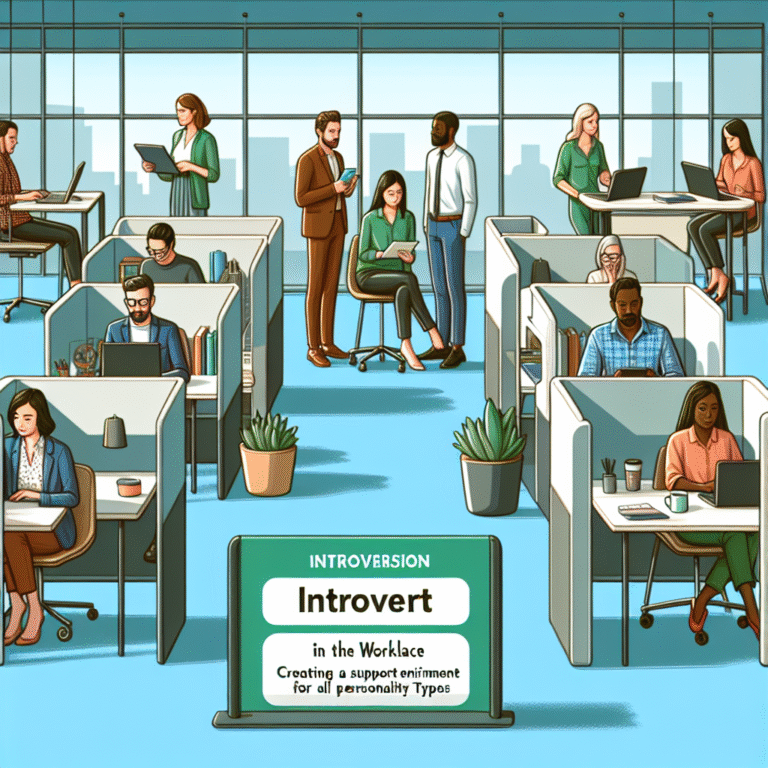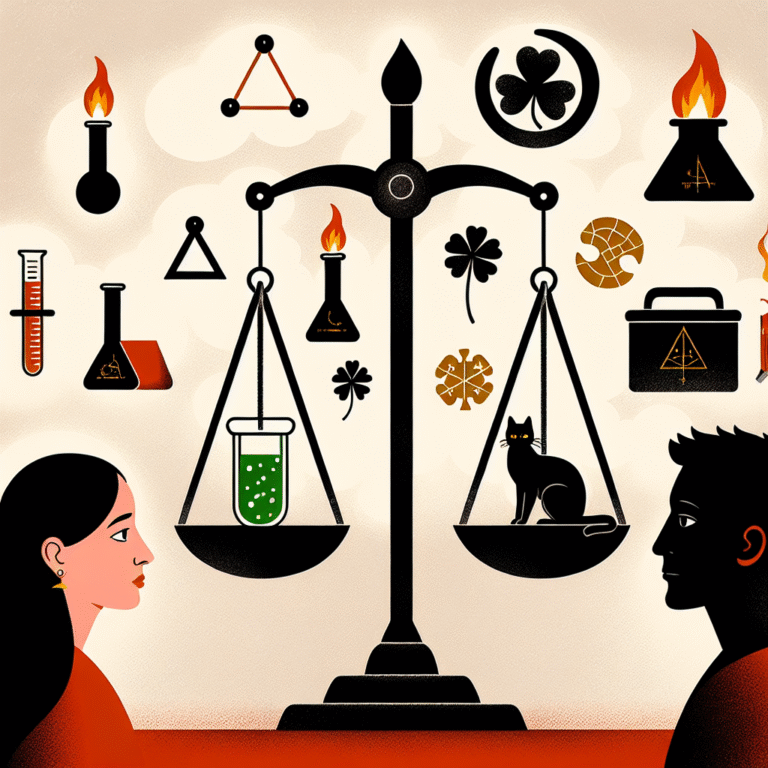Introduction
Imagine you’re at a social gathering, engaging in a conversation with someone you’ve just met. As they speak, they lean in closer, maintain eye contact, and nod encouragingly. What does this nonverbal behavior communicate? On the other hand, picture someone who crosses their arms, avoids eye contact, and checks their phone during a conversation. What message are they sending?
The Science of Nonverbal Communication: How Your Body Speaks Louder Than Words is not just an academic concept; it’s an essential aspect of human interaction that dictates how we perceive and are perceived by others. Research suggests that up to 93% of communication is nonverbal, encompassing facial expressions, gestures, posture, and even physical distance. By understanding and harnessing the potential of nonverbal signals, we can enhance our relationships, boost our careers, and create a more profound connection with those around us.
In this in-depth article, we’ll dive into the fascinating world of nonverbal communication, providing unique insights into how body language shapes our interactions.
The Components of Nonverbal Communication
1. Facial Expressions
Facial expressions are arguably the most immediate and universal form of nonverbal communication. According to Dr. Paul Ekman, a pioneer in the study of emotions and facial expressions, there are six basic emotions expressed through our faces: happiness, sadness, anger, surprise, disgust, and fear. These emotions transcend cultural barriers and often provide more insight than words themselves.
Case Study: The Emotion in Action
In a study conducted in 2009, Ekman analyzed the facial expressions of participants from various cultures as they were shown emotional stimuli. Interestingly, the consistency in facial expressions across cultures confirmed the universal nature of these signals. Understanding these expressions gives us the tools to read others more effectively and monitor our own reactions.
2. Gestures
Gestures can significantly affect how messages are interpreted. From the thumbs-up sign indicating approval to more complex gestures like those used by sign language speakers, hand movements contribute meaning to verbal communication.
Table 1: Common Gestures and Their Meanings
| Gesture | Meaning |
|---|---|
| Thumbs Up | Approval or positivity |
| Open Hands | Openness, honesty |
| Pointing | Direction or emphasis |
| Facepalm | Frustration or disbelief |
Case Study: The Gesture of Persuasion
In a study by Princeton University, researchers discovered that speakers who used gestures while speaking were perceived as more persuasive compared to those who remained still. The ability to communicate through gestures enhances relatability and connection, emphasizing The Science of Nonverbal Communication: How Your Body Speaks Louder Than Words.
3. Posture
Posture can convey confidence and authority or submissiveness and insecurity. Standing straight with shoulders back often communicates confidence, while slouching can suggest a lack of interest or engagement.
Visual Representation: Posture Scale
| Posture | Communication Effect |
|---|---|
| Open and wide stance | Confidence and approachability |
| Crossed arms | Defensiveness or resistance |
| Slumped shoulders | Low energy or disinterest |
4. Proxemics
Proxemics refers to personal space and the physical distance we maintain during interactions. Edward Hall’s theory of proxemics divides interpersonal distance into four zones: intimate, personal, social, and public. Each zone has a different meaning and function, affecting how we interact in various social situations.
Case Study: The Impact of Space in Communication
In a 2015 study by the University of Kent, researchers observed how different distances during conversations affected the perceived intimacy and trust levels between individuals. The results indicated that closer proximity fostered a deeper connection, showcasing the importance of space within The Science of Nonverbal Communication: How Your Body Speaks Louder Than Words.
The Interplay Between Nonverbal and Verbal Communication
Understanding the interaction between verbal and nonverbal elements is crucial. For example, when someone says “I’m fine” while displaying closed-off body language, the juxtaposition leaves the listener confused or skeptical.
1. Congruence vs. Incongruence
When verbal and nonverbal signals align, we experience congruence, which increases trust and understanding. Conversely, when they contradict, we encounter incongruence.
Case Study: The Incongruence Effect
In a study conducted by the University of California, researchers found that participants viewing a video where a speaker expressed happiness through words but sadness through facial expressions were more likely to distrust the message. This highlights the need for harmony in communication and reaffirms The Science of Nonverbal Communication: How Your Body Speaks Louder Than Words.
Enhancing Your Nonverbal Communication Skills
1. Becoming More Aware
The first step in enhancing your nonverbal communication is to increase your awareness of your own body language and that of others. Regular reflection on your posture, gestures, and facial expressions can improve your effectiveness in conveying messages.
2. Mimicking and Mirroring
One effective technique in building rapport is mirroring the nonverbal behaviors of those you interact with. This can develop a sense of connection and understanding, creating a more engaging interaction.
Case Study: Pumping Up the Connection
Research has shown that salespeople who intelligently mirror the body language of clients tend to close deals more effectively. This demonstrates the application of The Science of Nonverbal Communication: How Your Body Speaks Louder Than Words in professional settings.
3. Practicing Active Listening
Active listening goes hand-in-hand with nonverbal communication. Displaying engagement through eye contact, nodding, and appropriate facial expressions can enhance the conversation, making the other person feel valued and understood.
4. Controlling Your Body Language
Learning to control your body language, even when feeling nervous or uncertain, can create a positive atmosphere. For example, adopting a confident posture can affect not just how others see you but also how you feel about yourself.
5. Cultural Sensitivity
Cultural variations in body language require careful consideration, ensuring that your gestures and expressions are appropriate in various contexts. Research various cultural norms to avoid misunderstandings and embrace The Science of Nonverbal Communication: How Your Body Speaks Louder Than Words effectively across diverse settings.
Conclusion
In a world increasingly dominated by digital communication, the art of nonverbal expression has never been more critical. By understanding The Science of Nonverbal Communication: How Your Body Speaks Louder Than Words, we can enhance relationships, build trust, and communicate more effectively.
By refining our awareness and skills in nonverbal communication, we not only improve our interactions but also expand our influence in both personal and professional arenas. The body indeed speaks louder than words, and it is our responsibility to ensure that the message we send aligns with the message we intend.
FAQs
1. What is nonverbal communication?
Nonverbal communication encompasses all forms of communication that don’t involve words, including body language, facial expressions, gestures, and proximity.
2. How much do nonverbal cues matter compared to verbal communication?
Studies suggest that up to 93% of communication is nonverbal, highlighting its crucial role in how messages are conveyed and interpreted.
3. Can nonverbal communication vary by culture?
Absolutely. Different cultures interpret nonverbal cues differently, making cultural awareness an essential aspect of effective communication.
4. How can I improve my nonverbal communication skills?
Becoming more aware of your body language, practicing active listening, and understanding cultural differences can greatly enhance your nonverbal skills.
5. How do I ensure my nonverbal cues align with my words?
Focus on maintaining congruence between your verbal statements and nonverbal signals. This can involve adjusting your posture, facial expressions, and gestures to match your message.
By understanding and utilizing the insights provided in this guide, you’re setting yourself up for success in all your interpersonal interactions. As you practice and hone these skills, remember that your body is always speaking—make sure it’s saying the right thing.











